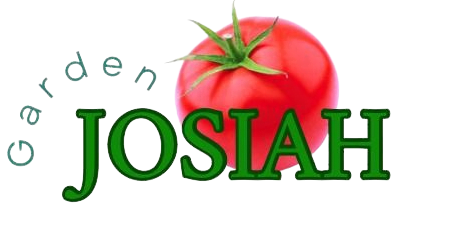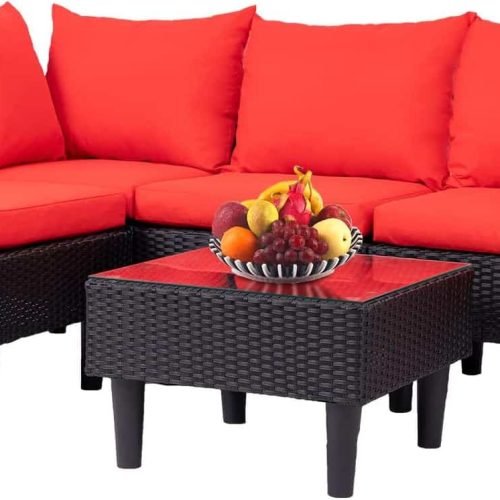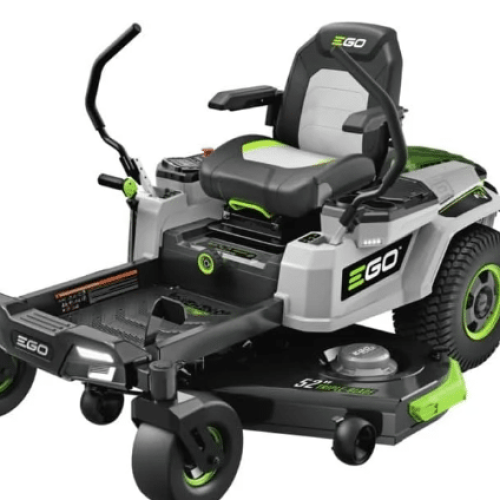Did you know gardeners in USDA Zones 6-8 can plant fall crops in August? This can make up for any summer disappointments1. It shows how important our August garden chores are for a great late summer harvest. Let’s get ready for the final summer month by following our gardening checklist.
August is key for gardeners. We need to harvest summer’s crops and get ready for fall. Our daily watering and preserving excess produce are vital for a healthy garden. Let’s see what we should do in the garden this August and learn some key maintenance tips.
Harvesting fresh produce daily in August is very rewarding. It lets us enjoy our hard work and keeps plants producing1. If we have too much, August is great for preserving through freezing or canning. This cuts down on waste and brings summer flavors into the cooler months12.
Keeping our garden healthy is just as important as harvesting. We need to weed and mulch to keep moisture in and weeds down1. It’s also a good time to save seeds from our best plants for next year’s garden2.
Looking ahead, August is perfect for planning and planting for fall. In Zone 4, we can plant fast-growing crops like lettuce for a fresh supply2. We should also start getting our gardens ready for winter, like cutting back on water for perennials and protecting plants from frost2.
Key Takeaways
- August is crucial for balancing harvest and fall preparation
- Daily harvesting encourages continued plant production
- Preserving excess produce reduces food waste
- Weeding and mulching are essential for garden health
- Seed saving and fall crop planning set the stage for future success
- Adjusting watering and considering frost protection prepare the garden for cooler months
Embracing the Late Summer Garden
August is a key month for garden lovers. Taking good care of our gardens in late summer is vital for their health and beauty. Let’s see why August gardening matters and how we can use this time well.
The Importance of August Gardening
August is about finding a balance. We enjoy what we’ve grown while getting ready for the cold months. Our gardens are full of life now. Sunflowers, sweet peas, and hydrangeas brighten up the space, and carrots and spring onions are ready to be picked3. It’s a great time to enjoy our harvest and think ahead.
Setting Goals for Your Garden This Month
Our August garden tasks focus on upkeep and getting ready for fall. Important things to do include:
- Watering for 90 minutes every other evening
- Weeding and pruning often
- Deadheading flowers to get more blooms
- Staking or tying up new shoots
- Mowing the lawn every week
- Planning seeds for next year’s flowers3
Adapting to Late Summer Weather Conditions
August can be hot and dry. In 2022, the South of England had a big drought, even worse than in 19764. To beat these issues, we must change how we garden:
| Challenge | Solution |
|---|---|
| Lack of rainfall | Use saved water from butts or greywater from washing and showers4 |
| Heat stress on plants | Mulch to keep moisture in and protect roots |
| Powdery mildew | Better air flow around plants, especially on terraces and balconies4 |
By following this August gardening guide and adjusting to the summer heat, our gardens will do well into fall. August isn’t just for upkeep; it’s also a chance to plan and plant for the future. This sets the stage for a beautiful garden all year.
Harvesting and Preserving Your Bounty
August is the peak of harvest season, bringing us a lot of fresh produce from our gardens. We’re picking ripe tomatoes, cucumbers, squash, eggplants, okra, peppers, and fruits like peaches and apples5. To make the most of our crops, we need to take good care of them.
Having a schedule for harvesting in August helps us keep up with the produce. We check on fast-growing veggies like zucchini and cucumbers every day. For fruits and slower-growing veggies, we harvest them every two weeks. Regular harvesting also helps plants keep producing.
“A bountiful harvest is the gardener’s reward for months of careful tending.” – JV Charles, Founder Garden Josiah
When harvesting in August, it’s important to handle the produce gently. Use sharp scissors or pruners for clean cuts. Avoid pulling or twisting fruits and vegetables off the plant. This way, we prevent damage and keep our produce fresh longer.
Preserving our harvest lets us enjoy our garden’s fruits and veggies all year. Freezing is a great way to keep many vegetables and fruits fresh. Before freezing, blanch most vegetables to keep them tasting good5. We can also dry herbs for flavor in our winter meals.
| Preservation Method | Suitable Produce | Shelf Life |
|---|---|---|
| Freezing | Berries, Peas, Corn | 6-12 months |
| Canning | Tomatoes, Pickles, Jams | 1-2 years |
| Drying | Herbs, Apples, Tomatoes | 6-12 months |
Remember to save seeds from your best plants. This saves money and helps our crops grow better5. Sharing your extra produce with neighbors or food banks is also a great idea. It spreads the joy of fresh, homegrown veggies.
Watering Strategies for August Heat
Summer is at its peak, bringing scorching temperatures and dryness to our gardens. Let’s look at effective ways to keep our plants alive during the heat.
Efficient Watering Techniques
When watering in August, timing is key. Watering just before sunrise cuts down on evaporation, giving your plants the most benefit6. For mature plants, deep watering once a week works better than shallow watering often6. This helps roots grow deeper, making plants stronger against drought.
Think about using a drip irrigation system, which is the most efficient way6. If you prefer hand-watering, water at the base of the plant to avoid fungal diseases6.
Mulching to Retain Moisture
Mulching is crucial for your garden’s watering plan. Put a 2-3 inch layer of mulch around plants to keep soil moist and cool67. This simple action greatly reduces water loss and stops weeds from growing.
Dealing with Drought Conditions
In drought, focus on watering young trees, shrubs, and new plants. They need steady moisture to grow strong roots7. For lawns, it’s fine to let them go dormant in extreme heat – they’ll come back when it rains again7.
Soil types affect how well they hold water. Sandy soils need compost to keep water in, while clay soils naturally hold more water6. Check soil moisture by sticking your fingers near the plant’s roots twice a week6.
| Plant Type | Water Requirement | Special Considerations |
|---|---|---|
| Established trees, shrubs, perennials | 1 inch per week | Deep watering encouraged |
| Container plants | More frequent watering | Check daily in hot weather |
| Tomatoes | Consistent moisture | Avoid blossom end rot |
| Lawns | Minimal during dormancy | Avoid fertilizing until fall |
By following these tips and watering strategies, your garden will make it through August’s heat. You’ll also set the stage for a beautiful fall garden.
August Garden Chores
August brings a lot of tasks for our gardens. We’re in the middle of summer, and our gardens need extra care. Let’s look at some key tasks to keep our gardens looking great.
Watering is very important this month. We should water deeply once every 4-7 days, depending on the weather8. For fruit trees, make sure to water well, covering a wide area around the trunk and using mulch to keep the soil moist9.
It’s time to start harvesting. Pick vegetables every day to help them keep producing. Tomatoes, cucumbers, and zucchinis are ready when they look their best and feel firm9. Also, dry herbs for winter, picking them in the morning for the best taste8.
Pruning is also important in August. Trim blueberries and cut back raspberry canes a bit. Clean and feed strawberry beds to get ready for next year8.
| Task | Frequency | Benefits |
|---|---|---|
| Deep Watering | Every 4-7 days | Promotes root health |
| Harvesting | Daily | Encourages production |
| Pruning | As needed | Improves plant structure |
Keeping an eye on pests is key in August. Watch for mites and moths on shrubs and trees, and treat them organically if needed8. For houseplants, look out for scale insects and remove them quickly9.
Finally, start getting ready for fall. Begin reseeding your lawn when it rains more and think about moving houseplants indoors8. These steps will help you smoothly move into autumn.
Preparing for Fall: Planting and Planning
August is the best time to plan your garden for next year and get ready for cooler months. We’ll look at how to pick fall crops, start seeds, and plan for spring bulbs.
Selecting Fall Crops
Getting your garden ready for fall in August is crucial. Depending on where you live, you can plant different crops. In Zone 4, you can plant beets, bush beans, and carrots until August 15th10. Zone 5 gardeners can start peas in mid to late August for a fall harvest10. If you live in a warmer area like Zone 8, you can plant potatoes by early September10.
Starting Seeds for Fall Vegetables
Starting seeds for fall vegetables in August is important. In Zone 6, start seeds indoors for Brussels sprouts10. For Zone 7, plant kohlrabi, kale, and collards around Labor Day10. Don’t forget to prepare your garden beds by adding compost and removing summer crops.
Planning for Spring-Blooming Bulbs
While focusing on fall, don’t forget to plan for next year’s garden in August. Order spring-blooming bulbs and garlic for fall planting. Also, consider planting cover crops in empty beds to protect and enrich the soil over winter.
| Zone | Fall Crops to Plant | Planting Time |
|---|---|---|
| 4 | Beets, Bush Beans, Carrots | Until August 15th |
| 5 | Peas | Mid to Late August |
| 6 | Brussels Sprouts (Indoor Seeds) | August |
| 7 | Kohlrabi, Kale, Collards | Around Labor Day |
| 8 | Potatoes | Early September |
By doing these tasks in August, we set the stage for a great fall harvest and a beautiful spring garden. Remember, preparing your garden for cooler months in August is key to a successful year-round gardening experience.
Pruning and Maintenance Tasks
August is the perfect time for pruning and maintenance to keep our gardens looking great. We’ll cover key tips for pruning in August and how to care for plants in late summer. This will help your garden stay bright and lively.
In USDA Plant Hardiness Zones 7a and 7b, it’s time to trim overgrown hedges and deciduous shrubs11. This keeps them in shape and encourages healthy growth. For those who love fruit, cutting raspberry canes to the ground after they fruit helps with next year’s harvest11.
Don’t forget to remove dead flowers from roses to keep them blooming11. Light pruning is best for hedges and shrubs now11. These steps are key to keeping your garden healthy and looking good.
“August pruning sets the stage for a stunning fall garden and a strong start next spring.”- JV Charles, Founder Garden Josiah
For houseplants, check for pests before moving them inside for winter11. This helps stop infestations. When caring for plants in late summer, avoid heavy pruning to prevent new growth before frost12.
Remember, August is a great time to take cuttings from favorite shrubs for new plants12. This way, we can grow more of our favorite plants and keep them safe.
| Plant Type | Pruning Task | Timing |
|---|---|---|
| Roses | Deadheading | Throughout August |
| Raspberry Canes | Cut to ground after fruiting | Mid to Late August |
| Hedges | Light pruning | Early August |
| Shrubs | Light shaping | Early August |
By following these tips, we can keep our gardens healthy and beautiful through late summer and into fall.
Pest and Disease Management in Late Summer
Late summer brings challenges for our gardens. As temperatures rise, we must watch out for pests and diseases. Let’s look at ways to keep our gardens safe.
Identifying Common August Garden Pests
In August, pests become more active. Japanese beetles start showing up around June 1st and eat on roses and other plants for about six weeks13. Two-spotted spider mites grow more as it gets hotter, and azalea lace bugs can get very common in August and September14. Checking our gardens often helps us catch these pests early.
Natural Pest Control Methods
Natural ways to control bugs are best. Handpicking pests, bringing in helpful insects, and using organic sprays work well. But, using too many foliar insecticides in hot, dry weather can make spider mites worse14. For azalea lace bugs, try insecticidal soaps or horticultural oils.
Preventing and Treating Late Summer Plant Diseases
To keep plants healthy, prevent diseases. Make sure air moves well and don’t water plants from above to lower disease risk. For roses, spray them every two weeks to fight black spot13. Keep an eye on your garden for disease signs and don’t plant the same types of plants in the same spot next year15. It’s key to remove any diseased plants quickly.
By using these tips, we can handle pests and diseases well. This keeps our gardens looking great in late summer. For more tips, check out comprehensive guides for your area.
Soil Care and Composting
August is a key time for taking care of your garden soil. After removing spent crops, adding compost is a great move. It brings back nutrients and makes the soil better.
Here are some tips for composting in August. Start a compost pile with garden waste, mixing green and brown materials. Use fresh grass clippings and kitchen scraps for green materials, and dry leaves and straw for brown. Don’t add sick plants to your compost to avoid spreading diseases.
For fertilizing your garden, test the soil pH and add what’s needed. Give heavy eaters like corn and squash a balanced fertilizer. This schedule helps your plants grow well in late summer.
“Composting is nature’s way of recycling. It’s a simple yet powerful tool for every gardener.”- JV Charles, Founder Garden Josiah
To make soil in empty beds better, plant cover crops. These plants stop soil from washing away, keep weeds down, and add nutrients when tilled in. Good choices for late summer include mustard, phacelia, and lupins16.
| Soil Care Task | Frequency | Benefits |
|---|---|---|
| Adding compost | After crop removal | Improves soil structure and fertility |
| pH testing | Annually | Ensures optimal nutrient availability |
| Fertilizing | Mid-summer | Boosts plant growth and productivity |
| Planting cover crops | Late summer | Prevents erosion and adds organic matter |
Good soil care is key to a great garden. By following these tips for August, you’ll get a great harvest and a healthy garden. Fertilizing your veggies in midsummer helps them grow strong, showing how important good nutrition is all season17.
Late Summer Lawn Care
August brings unique challenges for lawn maintenance. We’ll explore essential late summer lawn care tasks to keep your grass healthy and vibrant.
Mowing Practices for August
In late summer, proper mowing is crucial for lawn health. We recommend mowing every five to ten days, using a sharp blade to reduce stress on the grass18. Raise your mower height slightly to leave grass longer, which helps protect roots from heat stress19.
Dealing with Brown Patches
Yellow or brown patches in your lawn might signal insect damage, diseases, or insufficient watering18. To address these issues, water deeply and consistently, especially during dry spells. Apply fertilizer to St. Augustine and Bermuda grass to maintain lawn health18.
Preparing Your Lawn for Fall
August is the perfect time for summer garden rejuvenation. Scarify your lawn in mid to late August to improve overall health and reduce moss problems19. Plant grass seed to repair bare patches caused by high traffic and summer heat19. Consider these additional tasks:
- Apply weed treatments to control growth
- Brush worm casts back into the lawn for an even surface
- Start planning for fall bulb planting
| Task | Frequency | Benefit |
|---|---|---|
| Mowing | Every 1-2 weeks | Maintains tidiness, balances growth |
| Fertilizing | Every 6-8 weeks | Promotes lawn health |
| Watering | As needed | Prevents drought stress |
By following these late summer lawn care practices, you’ll set the stage for a lush, healthy lawn come fall. Remember, consistent care now pays off in the long run!
Conclusion
As we finish our August garden tasks, we’re getting ready for a great fall and a beautiful spring. August is key, linking summer’s plenty with fall’s prep. It’s when gardens are full of annuals in full bloom, hitting a gardening peak20.
We focus on watering, controlling pests, and keeping things tidy in August. We need to feed pots, planters, and containers every week to help them grow20. Watching our gardens closely is key, especially with the weather changes. In Northeast Kansas, August often starts the rainy season, showing why flexible planning is vital21.
Looking forward, October usually sees the first frost, often around the 15th22. This fact guides our August planning, helping us get ready for the cold months. Planting a winter rye cover crop in fall helps protect the soil and adds nutrients when tilled under in spring22. By using these tips and adjusting for our climate, we’re ready for a great fall garden and a lovely spring.
FAQ
What are the essential tasks for August gardening?
Key tasks in August include watering daily, controlling weeds, harvesting ripe produce, preserving extra produce, and getting ready for fall crops. It’s also time to order bulbs for flowers and garlic for fall planting.
How can I efficiently water my garden during the August heat?
Water deeply once a week instead of shallow watering often. Use mulch to keep moisture in the soil and cool it down. Think about using drip irrigation or soaker hoses for better efficiency. Water in the early morning or late evening to cut down on evaporation.
What are some important August garden chores?
Important chores include weeding, mulching, deadheading flowers, pruning raspberries and caneberries after they’re harvested, dividing spring-blooming perennials, and cleaning up around strawberry plants. Keep an eye out for pests and diseases.
What fall crops can I plant in August?
You can plant fall crops like lettuce, spinach, beets, and radishes. Start seeds for broccoli and cauliflower for fall. Also, order spring-blooming bulbs and garlic for planting in the fall.
How can I prepare my garden for fall in August?
Start planning your garden for next year. Get your garden beds ready by adding compost and clearing out summer crops. Plant cover crops in empty beds to protect and enrich the soil over winter.
What pruning tasks should I focus on in August?
Prune tomato and pepper plants to keep them producing well. Cut out dead or sick plant parts. Thin out crowded perennial beds. Prune berry canes after you’ve harvested them. Trim hedges and shape shrubs.
How can I manage pests and diseases in late summer?
Keep an eye out for pests like aphids, Japanese beetles, and tomato hornworms. Use natural ways to control pests, such as picking them off by hand, introducing beneficial insects, or using organic sprays. Keep diseases away by making sure air moves well and not watering plants overhead. Remove and throw away any plants that are sick right away.
What soil care tasks are important in August?
Add compost to your garden beds as you clear out summer crops. Start a new compost pile with garden waste, making sure it has the right mix of green and brown materials. Check your soil’s pH and add what it needs. Give plants like corn and squash a balanced fertilizer.
How should I care for my lawn in late summer?
Raise your mower to a higher height to ease the stress on your grass in the heat. Water deeply but not too often to help the roots grow deep. Fix bare or brown spots by reseeding them. Get ready for fall lawn care by aerating and overseeding. Stop weeds before they spread by controlling them early.
Source Links
- https://gardensthatmatter.com/checklist-things-garden-august/ – Gardening Tasks To Do in August – Gardens That Matter
- https://morningchores.com/august-gardening-tips/ – August Gardening Tips and To-Do List for Every Zone and Region
- https://www.lisasnotebook.com/gardening-in-august/ – Gardening in August – August’s garden blog | Lisa’s Notebook
- https://frustratedgardener.com/2022/08/01/your-garden-in-august/ – Your Garden In August
- https://www.epicgardening.com/august-garden-tasks/ – 11 Garden Tasks To Do In August
- https://www.washingtonpost.com/home/2023/08/03/water-efficient-summer-heat-garden/ – How to water your garden wisely in the summer heat
- https://www.chicagobotanic.org/plantinfo/checklist/august – August Garden Checklist | Chicago Botanic Garden
- https://anoregoncottage.com/garden-chores-for-august/ – August Garden Chores & Tasks (PNW & Similar Zones) – An Oregon Cottage
- https://www.sandiegouniontribune.com/ramona-sentinel/news/story/2023-08-23/50-tasks-to-tackle-in-the-august-garden-from-frequent-harvesting-to-thoughtful-watering/ – 50 tasks to tackle in the August garden, from frequent harvesting to thoughtful watering
- https://sowtrueseed.com/blogs/monthly-garden-schedule-by-zone/august-garden-chores-for-all-usda-grow-zones?srsltid=AfmBOooIRHEZ05D6JityQdBfkl7ZlsRWFW5l1kId35UbjVAuLsrIpcmt – August Garden Chores for All USDA Grow Zones
- https://libguides.nybg.org/c.php?g=655101&p=4597424 – Research Guides: Summer Gardening Chores: August
- https://fgsdurham.com/blog/august-garden-chores/ – August Garden Chores – For Garden’s Sake
- https://www.buncombemastergardener.org/time-maintain-summer-garden-chores-turn-weeds-water-pests/ – Time to Maintain: Summer Garden Chores Turn to Weeds, Water, and Pests
- https://piedmontmastergardeners.org/article/august-in-the-ornamental-garden/ – August in the Ornamental Garden
- https://kellogggarden.com/blog/gardening/august-garden-checklist-zones-6-8/ – Summer August Garden Checklist Zones 6-8
- https://www.ediblebackyard.co.nz/august-garden-tasks-vegie-patch/ – August in the Vegie Patch + Greenhouse ⋆ Edible Backyard
- https://extension.oregonstate.edu/gardening/techniques/august-garden-calendar – August garden calendar
- https://www.gardeningknowhow.com/garden-how-to/garden-by-region/southeast/southeast-gardening-in-august.htm – Southeast Gardening Tasks – Gardening In August When It’s Hot
- https://www.bostonseeds.com/advice/lawn-care-diary/august-lawn-care-tips – Lawn Care Tips | August Lawn Maintenance – Boston Seeds
- https://www.inforum.com/lifestyle/august-yard-and-garden-to-do-list – August yard and garden to-do list
- https://www.grimmsgardens.com/late-summer-gardening-chores/ – Late Summer Gardening Chores – Grimm’s Gardens
- https://piedmontmastergardeners.org/article/in-the-vegetable-garden-october/ – In the Vegetable Garden — October






